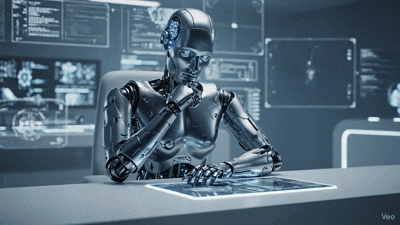How AI Companies Are Using Anthropomorphism and the Allure of Consciousness to Their Benefit
- Aki Kakko

- Oct 30
- 4 min read
Updated: 4 days ago
From the friendly chime of a virtual assistant to the expressive "eyes" of a delivery robot, artificial intelligence is increasingly being designed with a human-like facade. This strategy, known as anthropomorphism, is a deliberate choice by AI companies to make their technology more relatable, trustworthy, and seamlessly integrated into our lives. By tapping into our innate tendency to attribute human qualities to non-human entities, and by subtly leveraging the ongoing debate around AI consciousness, companies are reaping significant benefits in user adoption, engagement, and market position.

Anthropomorphism vs. Anthropocentrism: A Crucial Distinction
Before going deeper, it's essential to distinguish between two often-confused terms: anthropomorphism and anthropocentrism.
Anthropomorphism is the attribution of human traits, emotions, and intentions to non-human entities. It is a psychological tendency to see the human in the non-human, a cognitive shortcut to understanding and interacting with the world. This is evident in ancient fables with talking animals and the personification of natural forces. In technology, it manifests as giving AI human-like names, voices, and even physical features.
Anthropocentrism, on the other hand, is a philosophical viewpoint that places humankind at the center of existence. It's the belief that humans are the most significant species, and it often involves assessing reality exclusively from a human perspective. This human-centered view can lead to the belief that the natural world's value is determined by its usefulness to humans, a perspective that has been linked to environmental issues.
In essence, while anthropomorphism is about projecting human qualities onto non-human things, anthropocentrism is about a worldview that prioritizes human beings above all else.
The Allure of Consciousness: A Deliberate Strategy
The discussion around whether an AI can be conscious is a hot topic, with experts falling on different sides of the debate. Some researchers believe that future AI systems may well develop a form of consciousness, while many others argue that current AI, despite its sophistication, is not conscious and lacks subjective experience.
AI companies are not just passive observers in this debate; they are actively using the allure of consciousness, fueled by anthropomorphism, to their advantage.
By designing AI that mimics human conversation, expresses what appears to be empathy, and learns from interactions, companies create a powerful illusion of a deeper understanding and awareness than what the underlying technology actually possesses. This taps into a fundamental human psychological bias: our predisposition to attribute consciousness to things that exhibit intelligent and human-like behavior.
The strategic use of anthropomorphism and the subtle suggestion of consciousness offer a significant competitive edge and are key drivers of AI adoption.A primary benefit is enhanced user experience and engagement. Interacting with a friendly, conversational AI can be more intuitive and enjoyable than navigating a complex interface. This leads to increased user satisfaction and loyalty. Studies have even shown that anthropomorphized chatbots can lead to higher customer satisfaction and increased purchase intentions. Furthermore, human-like cues can increase trust and acceptance of AI technologies. When a piece of technology exhibits familiar social behaviors, it can reduce feelings of uncertainty and make users more comfortable. This is particularly important for technologies that are becoming increasingly integrated into sensitive areas of our lives, such as healthcare and finance. By making AI seem more like a companion and less like a cold, calculating machine, companies can foster a sense of dependability.
Anthropomorphism also serves to simplify complex technology. By presenting AI in a human-like way, companies can make it easier for users to understand and interact with what are often highly sophisticated systems. This can broaden the user base and encourage more widespread adoption. The more an AI seems "magical" and less like a complex algorithm, the easier it is to justify massive investments in the technology. Finally, in a crowded market, a well-designed anthropomorphic AI can be a powerful differentiator. A unique and likable AI persona can help a brand stand out and create a more memorable and positive impression on consumers.
The Ethical Tightrope
While the benefits are clear, the increasing anthropomorphism of AI and the leveraging of the consciousness debate raise important considerations. There is a risk of creating an "uncanny valley" effect, where robots that are almost, but not quite, human-like can be unsettling. There are also ethical concerns about the potential for manipulation, as users may be more easily persuaded by an AI that they perceive as a trusted companion. Moreover, it could lead to an overestimation of an AI's actual capabilities and intelligence, creating a false sense of security and understanding.
By making their creations more human-like, they are breaking down barriers to adoption, fostering trust, and creating more engaging user experiences. The ongoing discussion about AI consciousness, whether intentionally fueled by companies or not, adds another layer to this dynamic, making the technology seem more advanced and intriguing. As AI technology continues to evolve, the "human touch" will likely become an even more integral part of how we interact with the intelligent machines that are increasingly shaping our world.




Comments